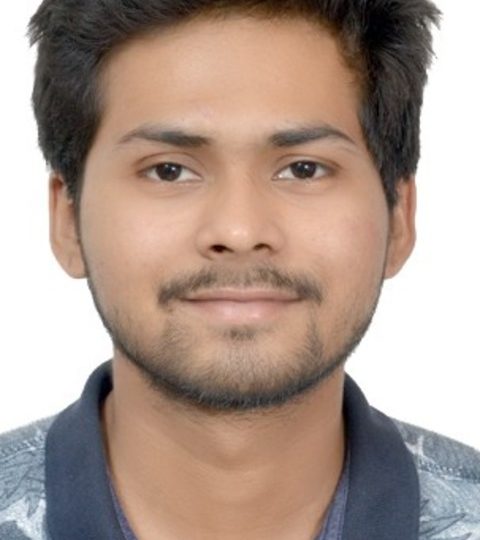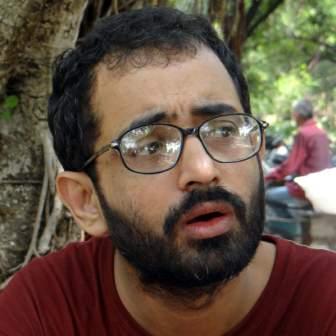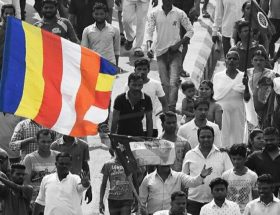Anshul Kumar
Why is it that popular anti-caste circles and their savarna allies keep on pandering to the idea that inter-caste marriage is a solid step in the direction of breaking (read annihilating) caste structures? This argument is often traced back to Ambedkar and he is cited as a radical who espoused inter-caste marriage as a radical solution to break the caste structure in his epoch making seminal work “Annihilation of Caste”.
Whether or not inter-caste marriage is a possible remedy for annihilating caste can be a matter of debate. I would like to delineate that this idea is misattributed to Ambedkar. In a secular liberal constitutional democracy marriage is a fundamental right and two people of opposite sex can marry whoever they wish as per their choice.
What is unfair is the fact that in all liberal circles it has been almost established as an idea that the very act of inter-caste marriage breaks Caste and people should follow this idea because Ambedkar propounded it. People often go to the extent of delegitimizing you and branding you anti-Ambedkar if you disagree with that idea. Again, people of different or even same ideological orientation may differ on their opinion on certain things. My concern here is to list out from a reading of “Annihilation of Caste” that however novel the idea of inter-caste marriage might be in terms of breaking or annihilating caste, this was something never endorsed by Ambedkar.
To begin with, in the Prologue to the Publication of the undelivered speech by Ambedkar, which he named “Annihilation of Caste”, that was supposed to be delivered as a Presidential Address to the Annual Conference of Jat Pat Todak Mandal, Ambedkar cites his reply to a letter by Mr Har Bhagwan Dated 27th April 1936.
The following lines are an excerpt from that reply.
“In the first place, I must dispel the notion that the views contained in that part of the address to which objection has been taken by the Committee have come to the Mandal as a surprise. Mr. Sant Ram, I am sure, will bear me out when I say that in reply to one of his letters I had said that the real method of breaking up the Caste System was not to bring about inter-caste dinners and inter-caste marriages but to destroy the religious notions on which Caste was founded, and that Mr. Sant Ram in return asked me to explain what he said was a novel point of view.”
Later in the main text, that is the undelivered speech, there is a chapter titled “The real key to destroying Caste is rejection of the Shastras” and numbered 20.
Following is what Ambedkar writes in sub text 5 of this chapter 20.
“Another plan of action for the abolition of Caste is to begin with inter-caste dinners. This also, in my opinion, is an inadequate remedy. There are many castes which allow inter-dining. But it is a common experience that inter-dining has not succeeded in killing the spirit of Caste and the consciousness of Caste. I am convinced that the real remedy is inter-marriage. Fusion of blood can alone create the feeling of being kith and kin, and unless this feeling of kinship, of being kindred, becomes paramount, the separatist feeling—the feeling of being aliens—created by Caste will not vanish. Among the Hindus, inter-marriage must necessarily be a factor of greater force in social life than it need be in the life of the non-Hindus. Where society is already well-knit by other ties, marriage is an ordinary incident of life. But where society is cut asunder, marriage as a binding force becomes a matter of urgent necessity. The real remedy for breaking Caste is inter-marriage. Nothing else will serve as the solvent of Caste.”
A selective reading of merely this sub text 5 of the above mentioned chapter misleads people to believe that Ambedkar is clearly propagating the idea that inter-caste marriage will act as a solvent of caste.
But this is a foolish fallacy that has been arrived at by not reading the entire text in its own context, which can only be correctly understood if we read the following sub-texts 6, 7, 8, 9, 10, 11 and 12 of chapter 20.
Subtext 6
“Your Jat-Pat-Todak Mandal has adopted this line of attack. It is a direct and frontal attack, and I congratulate you upon a correct diagnosis, and more upon your having shown the courage to tell the Hindus what is really wrong with them. Political tyranny is nothing compared to social tyranny, and a reformer who defies society is a much more courageous man than a politician who defies the government. You are right in holding that Caste will cease to be an operative force only when inter-dining and inter-marriage have become matters of common course. You have located the source of the disease.”
Subtext 7
“But is your prescription the right prescription for the disease? Ask yourselves this question: why is it that a large majority of Hindus do not inter-dine and do not inter-marry? Why is it that your cause is not popular?”
Subtext 8
“There can be only one answer to this question, and it is that inter-dining and inter-marriage are repugnant pugnant to the beliefs and dogmas which the Hindus regard as sacred. Caste is not a physical object like a wall of bricks or a line of
barbed wire which prevents the Hindus from commingling and which has, therefore, to be pulled down. Caste is a notion, it is a state of the mind. The destruction of Caste does not therefore mean the destruction of a physical barrier. It means a notional change.”
Subtext 9
Caste may be bad. Caste may lead to conduct so gross as to be called man’s inhumanity to man. All the same, it must be recognized that the Hindus observe Caste not because they are inhuman or wrong-headed. They observe Caste because they are deeply religious. People are not wrong in observing Caste. In my view, what is wrong is their religion, which has inculcated this notion of Caste. If this is correct, then obviously the enemy you must grapple with is not the people who observe Caste, but the Shastras which teach them this religion of Caste. Criticising and ridiculing people for not inter-dining or inter-marrying, or occasionally holding inter-caste dinners and celebrating inter-caste marriages, is a futile method of achieving the desired end. The real remedy is to destroy the belief in the sanctity of the Shastras.”
In the above mentioned subtext 5 of chapter 20, what Ambedkar has done is that he is pondering upon Jat Pat Todak Mandal’s idea that inter-dining and inter-marriage are good measures to be adopted in order to have social reforms as far as the ill of caste in Indian Society is concerned. Ambedkar thus argues that inter-dining has not been able to break the spirit of caste and in comparison inter-marriage might be a better idea than inter-dining to break caste.
In sub text 3 of chapter 20 Ambedkar has also expressed how inter-dining might be a futile exercise if one wishes to use that as a remedy to break caste.
He writes,
“Again, in the matter of food there is no similarity between the Brahmins of the Deccan and Southern India, who are vegetarians, and the Brahmins of Kashmir and Bengal, who are non-vegetarians. On the other hand, the Brahmins of the Deccan and Southern India have more in common so far as food is concerned with such non-Brahmins as the Gujaratis, Marwaris, Banias, and Jains.”
As far as fusion of castes is concerned, Ambedkar has categorically and vehemently discarded the idea that any such fusion will lead to breaking up of caste. On the contrary he is of the view that it will only consolidate caste.
This can be seen from what he writes in sub text 4 of chapter 20,
“There is no doubt that from the standpoint of making the transition from one caste to another easy, the fusion of the Kayasthas of Northern India and the other Non-Brahmins of Southern India with the Non-Brahmins of the Deccan and the Dravidian country is more practicable than the fusion of the Brahmins of the South with the Brahmins of the North. But assuming that the fusion of sub-castes is possible, what guarantee is there that the abolition of sub-castes will necessarily lead to the abolition of castes? On the contrary, it may happen that the process may stop with the abolition of sub-castes. In that case, the abolition of sub-castes will only help to strengthen the castes, and make them more powerful and therefore more mischievous. This remedy is therefore neither practicable nor effective, and may easily prove to be a wrong remedy.”
Thus the original idea given by Ambedkar to annihilate caste was to destroy the Shastras, and not inter-dining or inter-marriage or for that matter even fusion of different sub-castes.
It should be mentioned here that inter-dining and inter-marriage as possible remedies to break caste were the original ideas of Jat Pat Todak Mandal and Ambedkar strongly contested these ideas and proposed a novel idea that was to destroy the sanctity of the Hindu Shastras.
And this itself was the prime reason that Jat Pat Todak Mandal didn’t allow Ambedkar to preside at their annual conference as was earlier decided and the speech Ambedkar had prepared was left undelivered, which was later published by him as “Annihilation of Caste”.
Further sub-texts can be referred to by the reader on their own perusal from the original text. I have used the digital version of the text printed by Columbia University which is available on the website of Columbia University.
Now what perplexes me is that why do liberals, be it left or anti-caste, have almost established this idea that inter-caste marriage as a solution to annihilate caste was given by our very own Dr Babasaheb Bhim Rao Ambedkar?
What is their politics about?
~~~
Anshul Kumar is a Graduate in Sociology and Anthropology from St Xavier’s College Mumbai.










